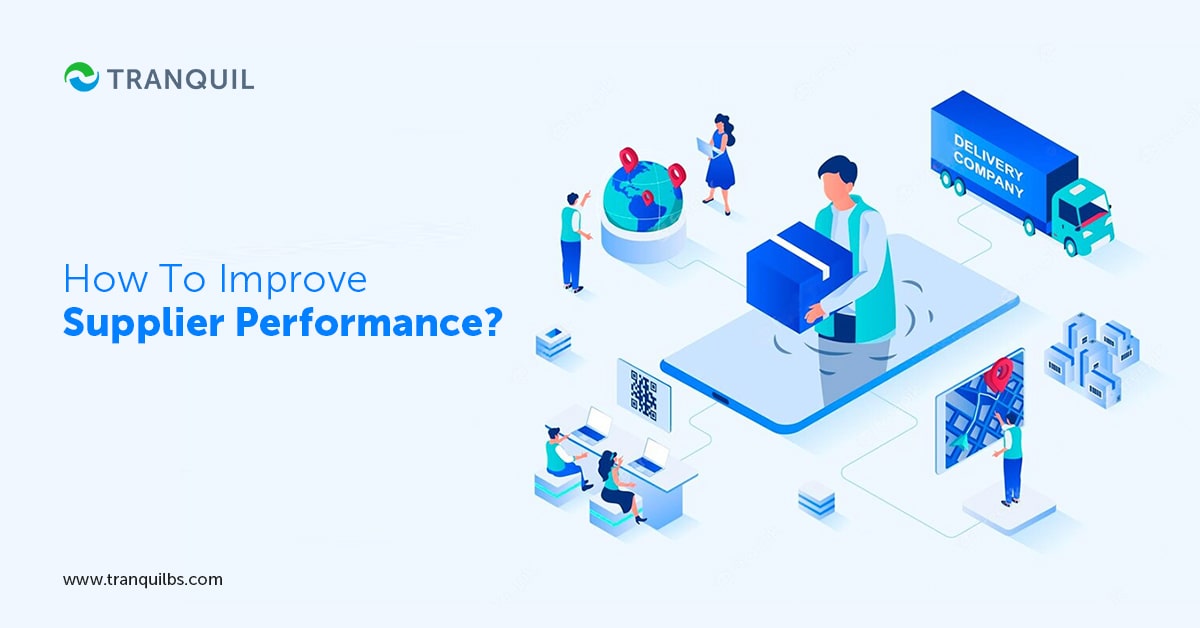
Today, there are intricate connections between retailers, distributors, vendors, manufacturers, and customers in the global economy.
The actions of one impact one another – whether negative or positive. It is therefore essential to have seamless coordination between the different partners in the supply chain to maintain your competitive edge, have customer retention, and have peak efficiency in operations.
Despite this, you may find that some suppliers’ performance isn’t satisfactory.
Vendor-level inefficiencies may not only disrupt your supply chain, but also raise your risk of not fulfilling customer expectations.
Obviously, it’s not possible to directly control your vendors; however, you can boost their performance by being proactive.
You can use tactics to enhance collaboration, measure efficiency via metrics, and also use technology to your benefit.
ALSO READ: Different Ways to Improve the Procurement Process
Customer is king, and businesses are always scrambling to meet their demands – and are on the lookout for ideas that can improve the management of their supply chain.
By improving supplier performance, you can:
ALSO READ: Cost Effectiveness Vs Cost Efficiency
If you want to have an edge over your competition, managing supplier performance is critical.
It does have its challenges, as supply chain faces difficulties constantly.
With a robust SRM strategy, you can decrease these challenges and help your business deliver more value to customers, minimize inefficiencies, and build your reputation.
Let’s take a look at the problems for your vendors and your business:

ALSO READ: A Guide To Inventory Stock Valuation
ALSO READ : Physical Stock Verification and Its Advantages
Planning to improve supplier performance is not just about supplier performance metrics; it also enables building robust partnerships between businesses and vendors.
Here is what we gathered from various industry experts:

The first step you need to take is to know where you are right now and where you want to go; a clear picture about what needs to improve to achieve your business goals is important.
A needs analysis can help you identify:
ALSO READ: Importance of Fixed Asset Tracking
It is imperative that you involve the upper management in the process; align corporate targets with supplier performance targets in your business plan – whatever the targets may be.
Cost reduction, tech innovation, productivity optimization, new markets – to achieve any of these, it’s important the management is convinced.
When you present your plan persuasively, you can be surer of proper resource allocation to meet your targets.
To operate at maximum efficiency, it is essential that your expectations are aligned with your suppliers’.
To this end, you need to update your SLAs with vendors to ensure clarity of intent, and make your relationships with them more predictable.
It can help vendors understand your demand patterns and scheduling of orders even as they change as time goes by.
ALSO READ: What Is a Balance Sheet?
You should ideally update:

The management process becomes easier when you define which supplier performance indicators you want to measure at the outset.
It allows you to constructively discuss supplier performance and come up with ways to improve them.
Most popular metrics include:
You need to aggregate the metrics you collect over time and study them to get a clear picture about vendor performance; remember to prioritize the metrics that affect your business continuity and revenues the most.
ALSO READ: Vital Procurement KPIs You Cannot Ignore
Establish permanent measurement methods with yearly reviews that cover crucial aspects like response capacity, sales support, product management, and service evaluation.
This will allow you to convey to the vendor what exactly you want and makes you satisfied.
Rather than a generic scorecard, try implementing unique needs per vendor.
Yes, it’s more work, but will be much more effective in the long term.
With customized targets, vendors can’t shirk their responsibilities.
The scorecard functions as a dashboard updated daily and conveys clearly defined responsibilities and standards to both parties.
You can focus on your strengths and weaknesses with appropriate analysis and identify the organizational changes needed to rectify the gaps discovered.
Ensure that your internal reviews are realistic and honest.
Draw comparisons between your company and other similar companies, and check which areas can be improved.
Asking for outside help for a completely unbiased evaluation is also a good idea.
ALSO READ: Keys To Make Project Management Success

With market conditions in a perpetual state of flux and customer demands taking unpredictable turns, it makes sense to be proactive where SRM is concerned.
Communicate with your vendors proactively to ensure that your business is able to handle challenges before they have a negative effect on the later stages in the supply chain.
Being able to predict and rectify problems in performance ensures you have better control over vendor relationships and helps in achieving business goals.
Sharing information via integrated tech solutions and having regular two-way communication with vendors about how you can help them is one way of taking a proactive approach to managing your relationships with them.
If a supplier fails to meet the yardsticks established, share analytics with them to make them aware of their shortcomings and help them plan their shortcomings.
Being proactive can not just enhance communication but also optimize processes for you and your vendor, boosting the resilience of your supply chain.
ALSO READ: Important ERP Implementation Questions to Ask
You can bring all the functional areas responsible for the different elements of vendor performance under a single structure through a team approach, with you (the buyer) as the team leader.
Engineering, quality, planning, logistics and other departments may be brought into the team depending on the size and complexity of the supply chain.
It is essential that these teams are permanent for successful functioning and not temporary assignments for fulfilling short-term targets.
Ideally, team members must share SRM targets and plans, learning and working together to improve supplier performance.
Modern supply chains are complex and require more resources than most businesses have; however, the long-term gains from following this approach are humungous.
Unfortunately, most companies ignore basic training on internal systems and practices, industry standards, and long-term strategies for supplier improvement etc., making them less efficient, especially when you compare them to well-trained teams.
Approaching suppliers, displaying an understanding of how their systems and operations work, enabling them to achieve new targets, all come under the ambit of improving vendor performance.
Training must focus on what is required from vendors and how to get it.
ALSO READ: Emerging Trends in Supply Chain Management
Collaborating with suppliers means getting them on board with your strategy building process and leveraging their expertise to jointly develop solutions.
This method is more sustainable than retailers identifying areas for improvement and asking vendors to come up with a solution.
Identify the reasons for inefficiencies and disruptions in supply chains and tackle the root causes in collaboration, integrating tech solutions with suppliers can ease collaboration.

The right tools can help you collect, organize and analyze real-time vendor data easily.
The right tech is essential for your business to have more visibility into supply chain challenges like customer demand, simultaneously optimizing all steps in the chain. Tech solution include:
ALSO READ: What is Hybrid ERP?
Vendors are vital partners to achieve optimal supply chains; you can partner with your vendors to deploy strategies that boost their performance, streamline your supply chain, attain your objectives and benefit from robust partnerships.
At Tranquil, we provide a platform that enhances communication across the supply chain, give you 360-degree view of your inventory, product info, order statuses, etc. Our solution can help you cut costs, save time, and have a competitive advantage. Do schedule a FREE demo to see how it works!